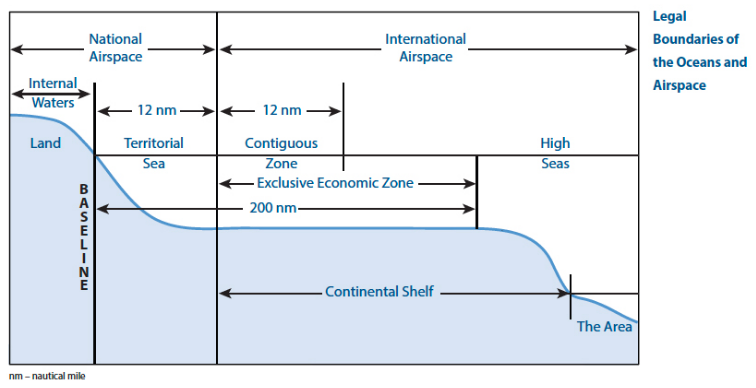Context:
Recently, the world’s first international treaty to protect the high seas was adopted at the United Nations.
- The treaty, officially known as the treaty on “Biodiversity Beyond National Jurisdiction” or BBNJ.
| Probable Question:
Q. “What are the key provisions and implications of the United Nations High Seas Treaty?” |

Image Source: NOAA Ocean Exploration
About the High Seas:
- According to the 1958 Geneva Convention, the high seas are the parts of the ocean beyond a country’s Exclusive Economic Zone.
- They lie beyond the jurisdiction of any one country.
- It extends up to 200 nautical miles from the coast, and no country is responsible for managing or protecting its resources.
- The high seas comprise 64 percent of the ocean surface, and about 43 per cent of the Earth.
Key Features of Treaty:
- Environmental Impact Assessments: It introduces requirements to carry out environmental impact studies for proposed activities to be carried out in international waters.
- Benefit Sharing Guidelines: The treaty also establishes principles for sharing the benefits of “marine genetic resources” (MGR) collected by scientific research in international waters.
- Negotiated under UNCLOS: The treaty was negotiated under UNCLOS of 1982 which governs the rights of countries regarding marine resources.
- Biodiversity Conservation: It recognizes the need for biodiversity conservation
- The ‘High Seas Treaty’ proposes to protect 30% of the world’s oceans and increase funding for marine conservation
Importance of High Seas:
- Importance and Extent of the High Seas: The high seas account for more than 60% of the world’s ocean area and cover about half of the Earth’s surface, which makes them a hub of marine life.
- Biodiversity of the High Seas: They are home to around 2.7 lakh known species, many of which are yet to be discovered.
- Regulate Climate: The high seas regulate the climate by playing a fundamental role in planetary stability by mitigating the effects of climate change through its absorption of carbon and by storing solar radiation and distributing heat around the globe.
- Anthropogenic Pressures on the High Seas: It include seabed mining, noise pollution, chemical spills and fires, disposal of untreated waste (including antibiotics), overfishing, introduction of invasive species, and coastal pollution.
| Additional Information:
About UNCLOS:
- UNCLOS defined the rights and duties of countries in the oceans, the extent of ocean areas over which countries could claim sovereignty, and the legal status of marine resources.
- It also specified a set of general rules for a range of activities in the oceans including navigation, scientific research, and deep-sea mining.
|
News Source: Hindustan Times
![]() 21 Jun 2023
21 Jun 2023
